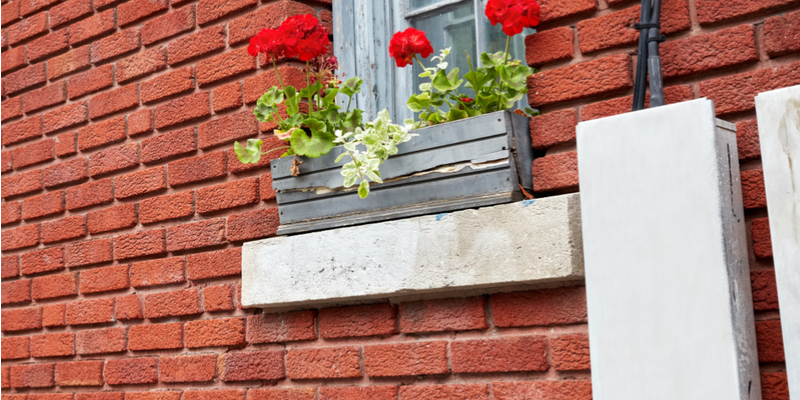Driving rains, lack of drainage, and even the way that the soil around a building meets up with brickwork can all impact how water enters brickwork and causes damage. The design of a wall is key, as is the landscaping around the wall. Water is the leading cause of damage in brick homes. Therefore, it’s important to understand what causes water damage to bricks.
Water is going to get inside of your bricks, no matter what, the important thing is that your brick home or building is designed to properly expel this water before it has a chance to cause damage. So, it’s not the water getting in that’s the problem. Instead, it’s how the brick wall is designed to accommodate moisture, as well as how outside factors are set up to limit water infiltration.
5 Reasons Water Gets into Brickwork & Causes Issue
#1. Landscaping Soil
If landscaping soil sits at the base of your brick home, it is very possible that the water in the soil will seep inside of the wall. If the soil sits too high up on a brick wall it is even more likely that this will occur. If too much moisture gets inside it can essentially become trapped there, especially if the soil covers and blocks built-in weep holes.
Furthermore, when the soil is full of water it will expand and push on the walls. This pressure can lead to cracks in your foundation. Therefore, there are more reasons than one why you should keep soil away from the base of your home.
#2. Newer Construction May Be More Susceptible Than Older Brick Homes
In some cases, newer construction is more susceptible to water infiltration than older brick homes. That’s because old masonry structures rely on 2 or 3 layers of brick, including an inner layer of brick that you cannot see from the outside. This layer is made from softer and more absorbent brick that takes in excess moisture that gets inside from driving rains. The water remains here until the sun comes back out, at which point the brick begins to release the moisture and it evaporates through the surface.
Newer construction made from single brick veneer lacks this extra layer of protection and is therefore more susceptible to taking on more moisture than it can handle. Luckily, most homes are built with weep holes to help address this issue, which brings us to our next point…
#3. There Are Not Any Weep Holes
Weep holes are literally holes specifically placed around a brick structure to release water. Water is channeled to a flashing at the bottom of the wall and is released through the weep hole. Yet, even if you have weep holes properly installed, they can become blocked if your landscaping is too high and covers the holes. Thus, bringing us back to the importance of #1.
#4. Poor Construction
Easily one of the best ways to encounter water issues with brick is through improper construction methods. Even thick masonry walls made from quality materials can let water inside. That’s why brick walls must be designed to accommodate some level of moisture penetration.
The goal is to prevent the water from moving from the brick into the interior building envelope. There are two different types of brick walls that are specially designed for weather-resistant construction. The first is a drainage-type wall, and the second is a barrier-type wall.
The exact mix used for mortar and masonry matters as well, as different combinations are more susceptible to damages from water.
#5. No Drainage System in Place
The drainage system around the outside of your home plays a big role in how water impacts brickwork. Water must drain away from the home so that it doesn’t build up and flood the lower portions of a brick wall. Also, if a drainage pipe regularly spills over one part of the brick wall, this can also lead to overly moist bricks that never get a chance to properly dry out.

